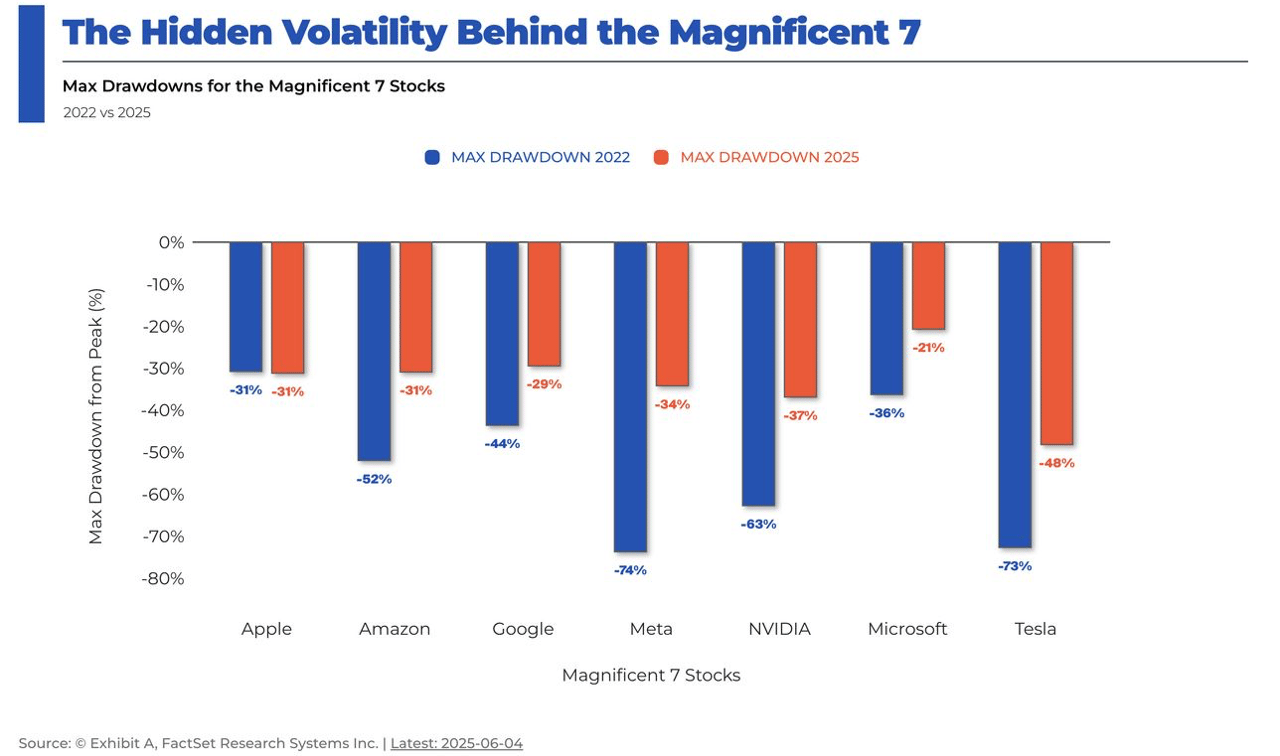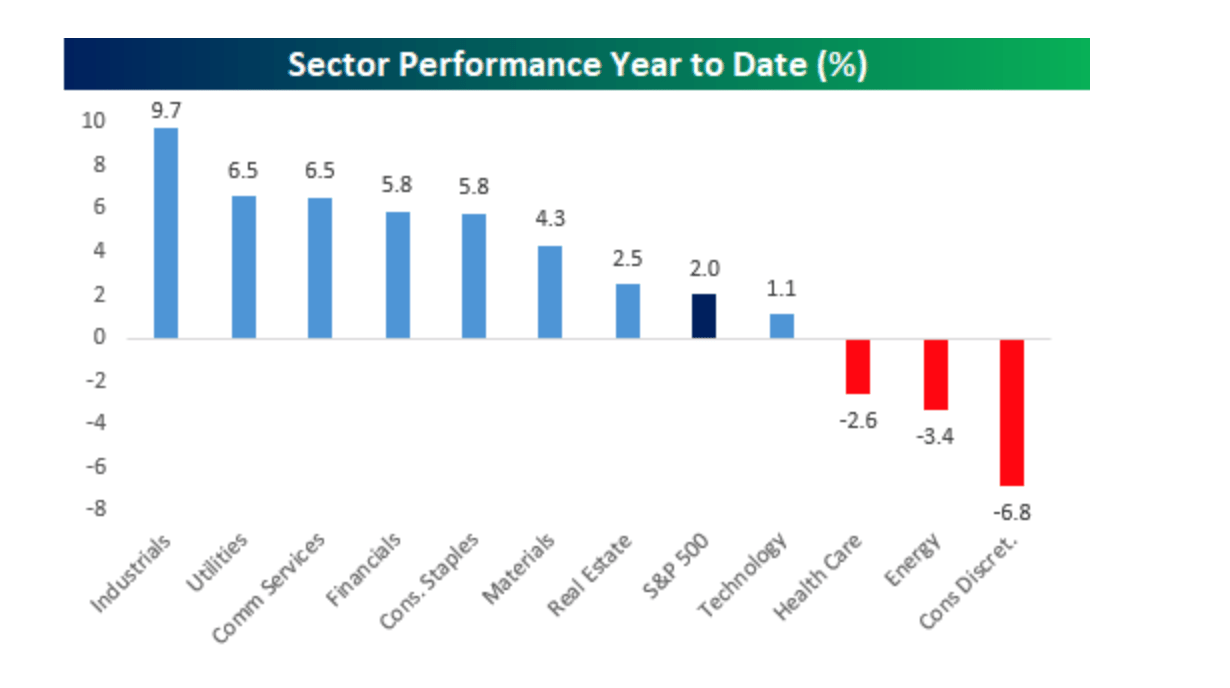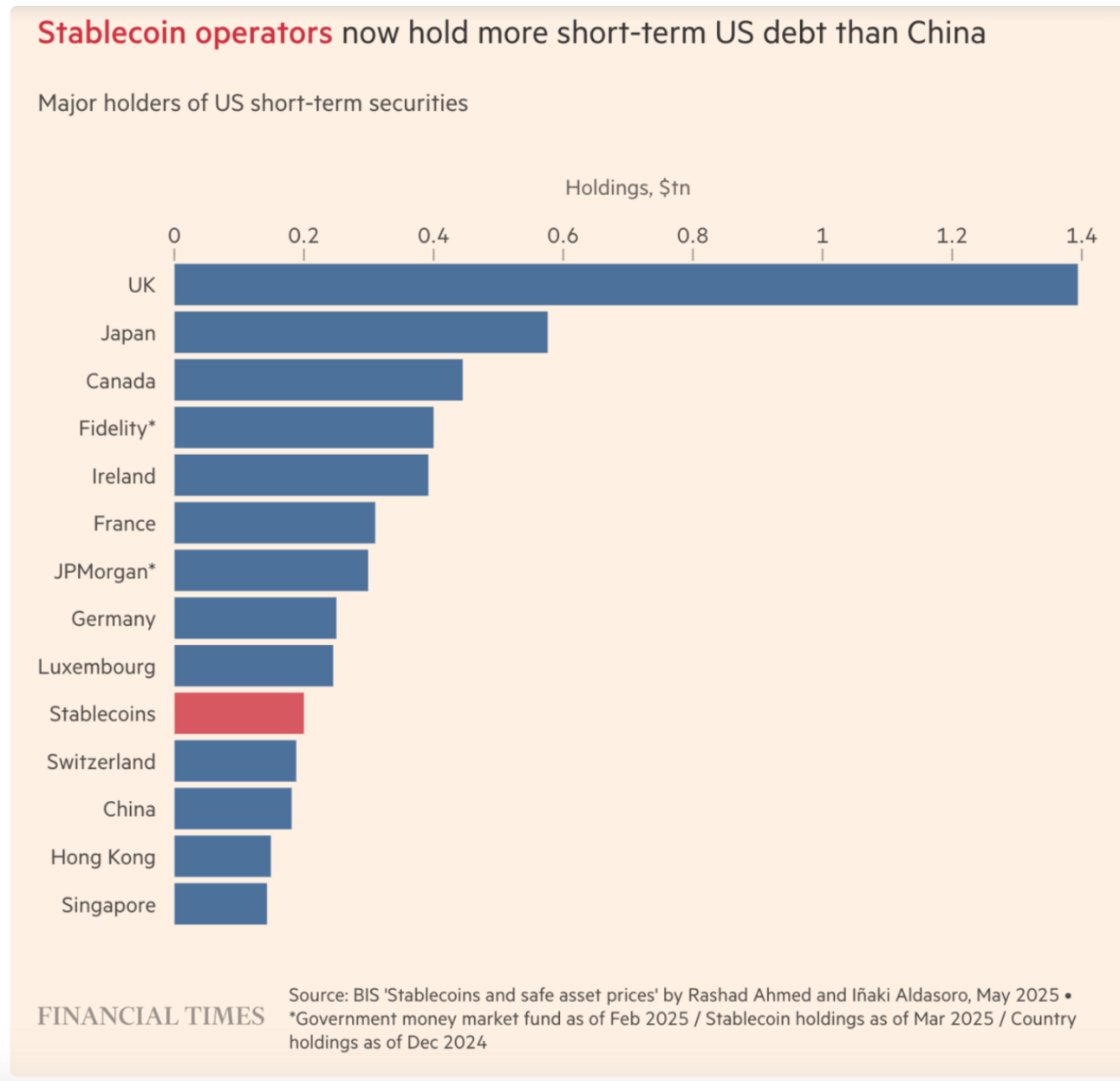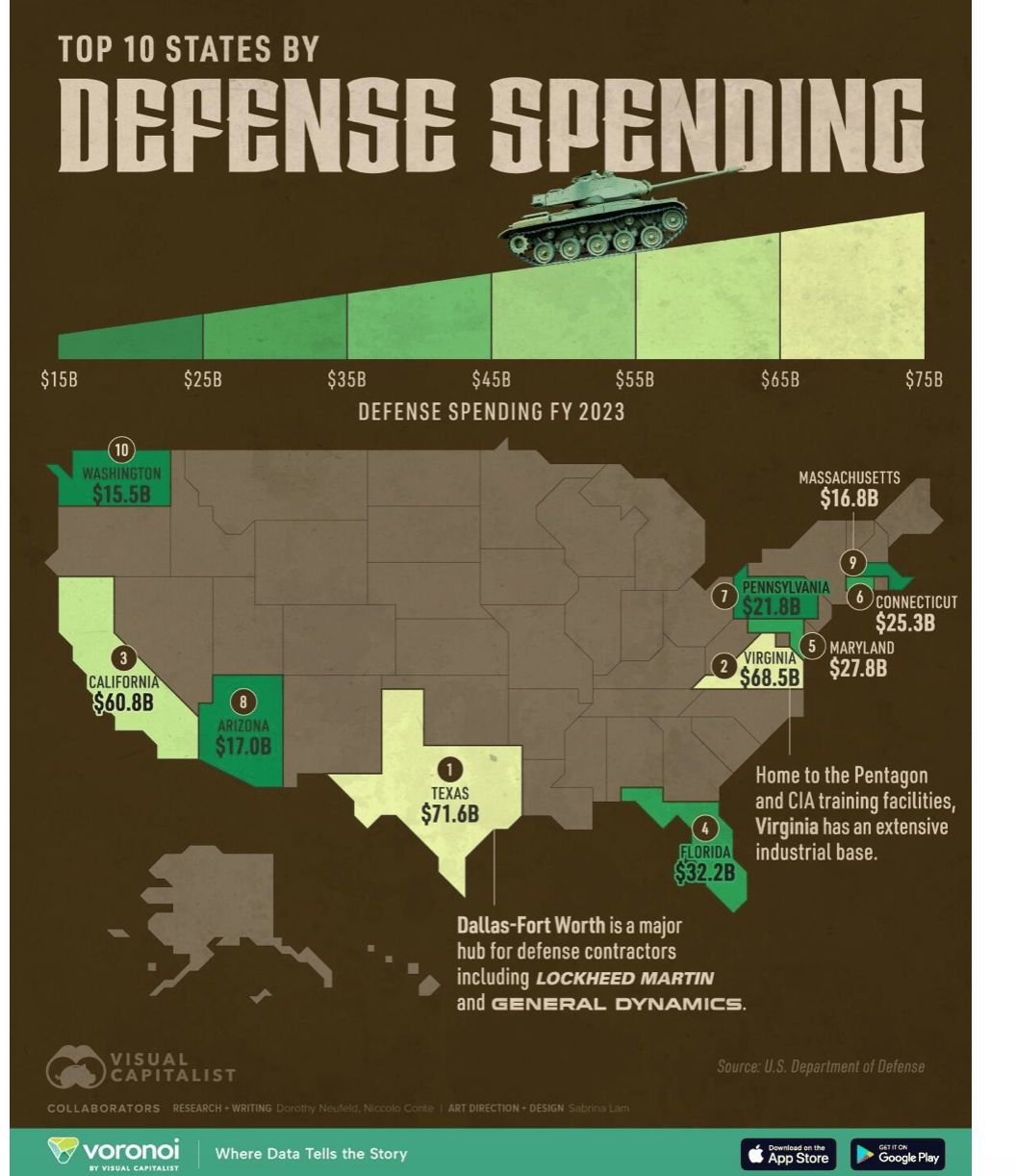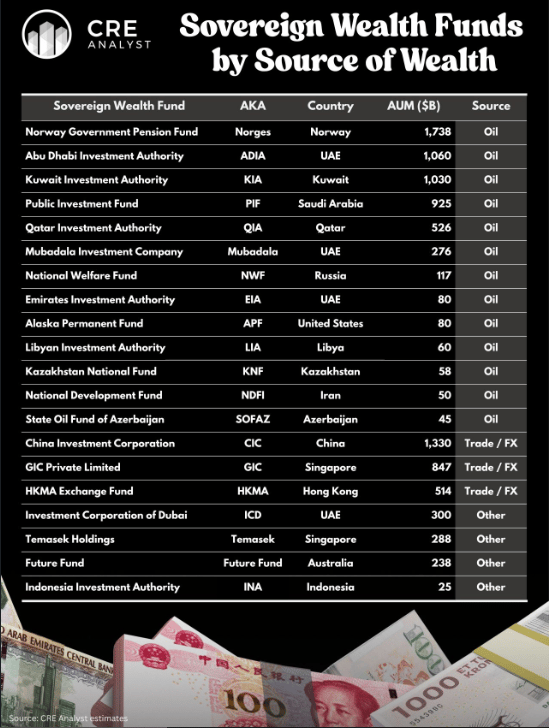- TOPLEY'S TOP 10
- Posts
- Topley's Top 10
Topley's Top 10
Vanguard Growth Fund Right at Previous Highs
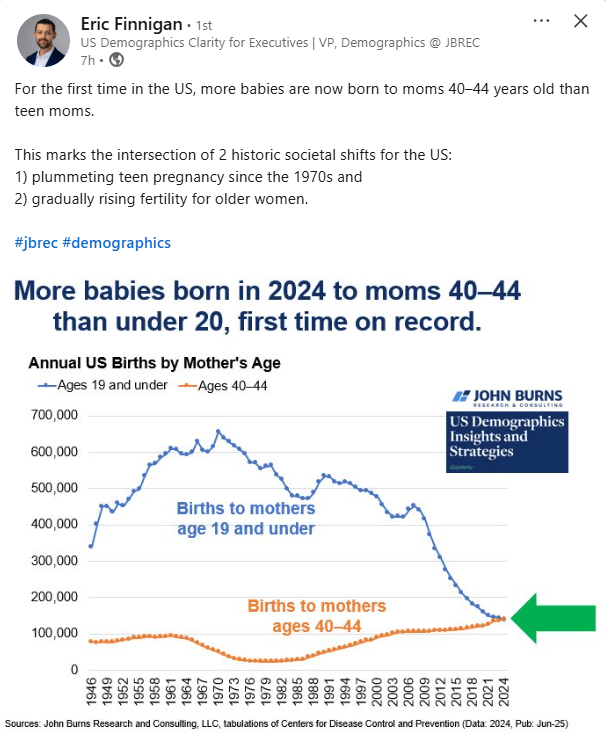
2….
…
…
…
…
5. Stablecoins Risk Stack
Per TBAC’s report:
Stablecoins are digital assets designed to maintain a stable value by pegging their worth to a reserve asset, such as fiat currency (USD). The intended stability of stablecoins has made them a key enabler for payments and as a store of value in on-chain ecosystems.
The graphic below, from its report, shows that some stablecoins are incredibly secure, as they are backed by Treasuries, repo transactions, and money market funds. However, as you move down the list of types of stablecoin, others are supported by riskier assets, algorithms, and smart contracts.
…
…
…
…
…
10. What’s the Safest Sunscreen for Your Body
Via Mark Hyman, Co-Founder & Chief Medical Officer of Function Health
Right now, plenty of people are rethinking their sunscreen—not because they don’t believe in sun protection, but because they’re uneasy about what’s in the bottle.
Some of the chemical ingredients commonly used to block UV rays—like oxybenzone—have been linked to hormone disruption or skin irritation. Others haven’t been studied as thoroughly as you might expect, especially given how often we use them.
If you’re looking for something safer for your body (and your family), we’ve got you covered. In this article, the Hyman Health team shares the sun protection products we actually keep in our own beach bags—go-to picks made with ingredients you can feel good about.
Why Some Sunscreens Raise Concerns
If you’ve ever flipped over a sunscreen bottle and wondered what those long ingredient names actually mean, you’re not alone. Some of the most common chemical filters have raised red flags for their potential effects on human health and the environment.
Here are a few you may want to avoid:
Oxybenzone and octinoxate: linked to hormone disruption and banned in some locations for harming coral reefs
Homosalate: under review for safety due to potential endocrine-disrupting effects
Octocrylene: can break down into benzophenone, a possible carcinogen
One thing to keep in mind: The biggest concern with these ingredients isn’t occasional use on a beach vacation or a quick swipe on your nose. It’s about cumulative exposure—using them regularly, over large areas of the body, often without realizing what’s in the product.
If you’re in a pinch, and the only sunscreen available contains one of these ingredients, it’s still better than getting burned. But when you have options, choosing a cleaner formula is a simple way to lower your overall exposure.
If you’re curious about the research behind these concerns—or want to know how antioxidants from food can strengthen your skin’s natural defenses—check out our full guide to sunscreen safety.
How to Choose a Safer Sunscreen
When it comes to sunscreen, mineral-based formulas are generally your best bet.
Unlike chemical sunscreens, which absorb UV rays and can include ingredients linked to hormone disruption, mineral sunscreens use physical blockers—usually zinc oxide—to sit on top of the skin and reflect UV light.
They start working immediately, are less likely to irritate sensitive skin, and don’t absorb into the bloodstream the way some chemical filters can.
Look for sunscreens that use non-nano zinc oxide, which refers to particle size. Non-nano particles are larger and less likely to be absorbed through the skin, making them a safer choice for both people and the environment.
If you’re trying to figure out whether your sunscreen makes the cut, check out the Environmental Working Group’s (EWG) Guide to Sunscreens. You can search by brand, see how your current product rates, and explore safer options that meet EWG’s strict criteria for ingredient safety and UV protection.
Here are three Hyman Health staff favorites:
Annmarie Gianni Sun Love Natural Sunscreen SPF 20 This all-natural, mineral-based sunscreen isn’t rated by EWG, but it’s a team favorite for everyday use. It uses non-nano zinc oxide for broad-spectrum protection and includes antioxidant-rich botanicals. Sunflower seed oil adds hydration and helps support the skin barrier—especially helpful if you’re applying daily. Learn more.
Badger Sport Mineral Sunscreen Cream SPF 40 A reliable, water-resistant mineral sunscreen that’s earned a top rating from the EWG. It features non-nano zinc oxide as the active ingredient and keeps the rest of the formula simple: just a few clean ingredients to nourish the skin while you’re out in the sun. Learn more.
Sunly Kids Mineral Sunscreen Face Stick SPF 30 This EWG Verified™ sunscreen stick is a convenient, mess-free option for kids. (They also have an adult version.) It uses non-nano zinc oxide for broad-spectrum protection and glides on easily without leaving a heavy residue. The formula is fragrance-free, gentle on sensitive skin, and made with moisturizing ingredients. Learn more.
What about Sunblock Sprays?
If you’ve checked the Environmental Working Group (EWG) sunscreen guide, you might’ve noticed that no spray sunblocks or sunscreens score better than a 3 on their 1–10 hazard scale (where 1 is the safest and 10 is the most concerning).
A 3 isn’t terrible—it often means the ingredients themselves are relatively safe. But even mineral-based sprays that use zinc oxide or titanium dioxide fall short for one big reason: inhalation risk.
When sprayed into the air, small particles can become airborne and enter the lungs, where they may cause harm—especially over time or in children. That concern is enough to drop the product’s overall safety score, even if what’s on your skin is relatively clean.
Sprays also raise another issue: uneven coverage. It’s easy to miss spots or apply too lightly, especially on windy days or when you’re in a hurry. What looks like a fine mist doesn’t always translate to full protection.
If you still prefer a spray, just know the tradeoffs. To minimize the risks and get better coverage, spray it into your hands first, then apply it like a lotion.
…
Did someone forward this email to you? Get your own:
Disclosure
Indices that may be included herein are unmanaged indices and one cannot directly invest in an index. Index returns do not reflect the impact of any management fees, transaction costs or expenses. The index information included herein is for illustrative purposes only.
Material for market review represents an assessment of the market environment at a specific point in time and is not intended to be a forecast of future events, or a guarantee of future results.
Material compiled by Lansing Street Advisors is based on publicly available data at the time of compilation. Lansing Street Advisors makes no warranties or representation of any kind relating to the accuracy, completeness or timeliness of the data and shall not have liability for any damages of any kind relating to the use such data.
To the extent that content includes references to securities, those references do not constitute an offer or solicitation to buy, sell or hold such security as information is provided for educational purposes only. Articles should not be considered investment advice and the information contain within should not be relied upon in assessing whether or not to invest in any securities or asset classes mentioned. Articles have been prepared without regard to the individual financial circumstances and objectives of persons who receive it. Securities discussed may not be suitable for all investors. Please keep in mind that a company’s past financial performance, including the performance of its share price, does not guarantee future results.
Lansing Street Advisors is a registered investment adviser with the State of Pennsylvania.

